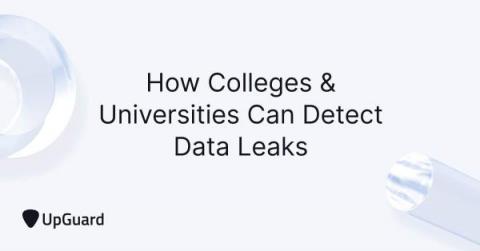Security | Threat Detection | Cyberattacks | DevSecOps | Compliance
Data Security
The latest News and Information on Data Security including privacy, protection, and encryption.
What is the FTC Safeguards Rule?
The FTC Safeguards Rule, is a set of regulations promulgated by the Federal Trade Commission in order to protect the privacy of consumers’ personal information. The Rule requires financial institutions to develop, implement, and maintain a comprehensive information security program designed to safeguard customer information.
Why Data Loss Prevention strategy is core to successful M&A
When two companies merge, there is typically a lot of data that needs to be transferred between the two organizations. This data may include confidential information such as customer records, financial reports, and employee data. If this data falls into the wrong hands, it could be used to commit fraud or theft. That’s where data loss prevention (DLP) comes in.
How To Store Employee Personal Data Securely and Why It Matters
As an employer, you have both a moral and legal obligation to shore up sensitive information about your employees. Sensitive information includes genetic and biometric data, medical records, SNNs (social security numbers), and criminal history records, just to name a few. Fail to do so, and you will open yourself up to loads of risk. Hackers are constantly on the hunt for applicant and employee data that they can further sell on the dark web or use to perpetrate fraud.
How to Unprotect Sensitive Data on AWS Redshift
How to Protect Sensitive Data on AWS S3 Buckets
5 Ways to Prevent Secrets Sprawl
The number of secrets exposed in public repositories is staggering. With reports in 2021 reaching up to 6 million secrets detected, an increase of 50% from 2020. Secret sprawl is part of every organization, but it is a plague on the open-source world of software development. Even if your organization has a top-notch security-aware culture, human error will inevitably cause secrets to leak and data to be lost or compromised.
Establish an Efficient DLP Policy With These 5 Best Practices
Strong data loss prevention requires two things: a strong policy that guides user actions and permissions, and the tools to monitor and manage data security. Many organizations know they need to invest in software, platforms, and other security settings to create secure networks, endpoints, and cloud settings. But not every organization has a strong DLP policy to guide these tools. Many compliance regimes require companies to record data loss prevention policies.
Your Definitive Guide to Data Security Posture Management (DSPM)
With high-profile data breaches making headlines on a regular basis, it’s no wonder that data security is top of mind for so many organizations. But what exactly is data security posture management (DSPM)? In this blog post, we’ll take a closer look at DSPM and how it can help your business keep its data safe and secure.
How Colleges & Universities Can Detect Data Leaks
Data leaks happen when sensitive data or personally identifiable information (PII) is accidentally exposed on the internet or dark web. Typically, data leaks only occur due to poor cyber hygiene, weak network security, or software misconfiguration that can lead to unintended data exposure. Without proper data leak detection processes, cybercriminals and hackers can exploit the exposed data without the organization’s knowledge using open-source intelligence (OSINT).









